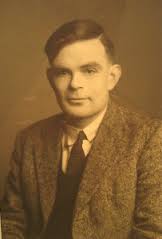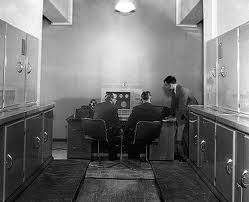I decided to take on the problem of German naval Enigma because no one was doing anything about it and I could have it to myself. In December 1939 I solved part of the naval indicator system, which was very complex. On the same night I also thought of the idea of Banburismus, a technique to help breaking the naval enigma, though I was not sure it would work in practice, and was not in fact sure until somedays had actually broken. For this I invented a device called the Ban, which measured weight.
I traveled to the United States in November of 1942 and worked with the US Navy cryptanalysis on Naval Enigma and bombe making in Washington. I visited their Computing Machine Laboratory at Dayton, Ohio and I was far from enthusiastic:
It seems a pity for them to go out of their way to build a machine to do all this stopping if not necessary. I am now converted to the extent of thinking that starting from scratch on the design of a Bombe, this method is about as good as our own The American Bombe program was to produce 336 bombes, one for each wheel order. I used to smile inwardly at the conception of test of commutators can hardly be considered conclusive as they were not testing for the bounce with electronic stop finding devices.
I traveled to the United States in November of 1942 and worked with the US Navy cryptanalysis on Naval Enigma and bombe making in Washington. I visited their Computing Machine Laboratory at Dayton, Ohio and I was far from enthusiastic:
It seems a pity for them to go out of their way to build a machine to do all this stopping if not necessary. I am now converted to the extent of thinking that starting from scratch on the design of a Bombe, this method is about as good as our own The American Bombe program was to produce 336 bombes, one for each wheel order. I used to smile inwardly at the conception of test of commutators can hardly be considered conclusive as they were not testing for the bounce with electronic stop finding devices.





 RSS Feed
RSS Feed